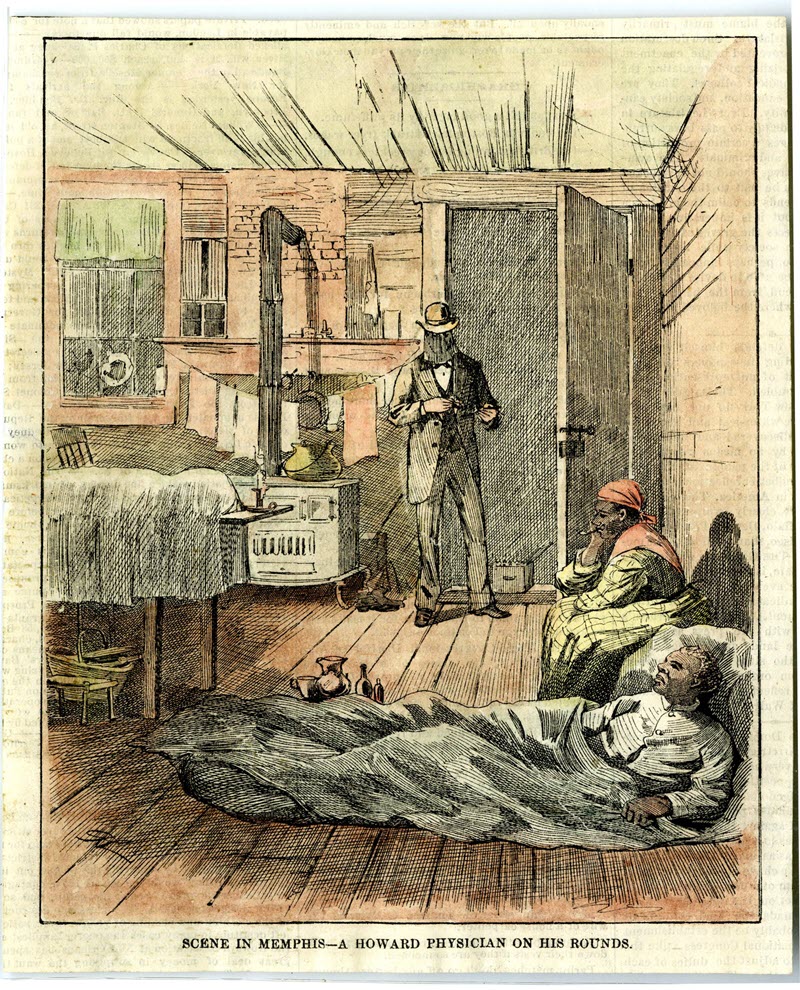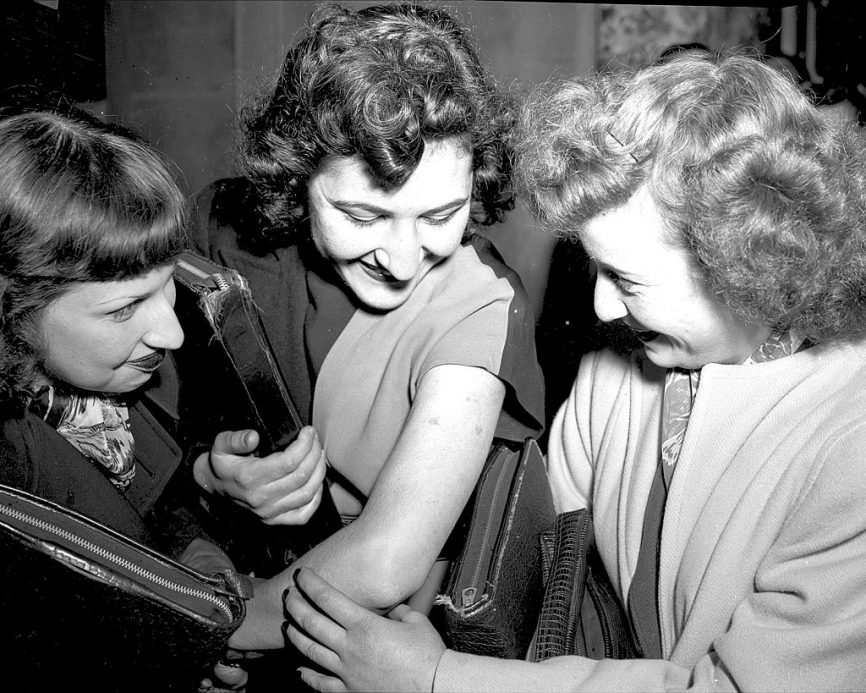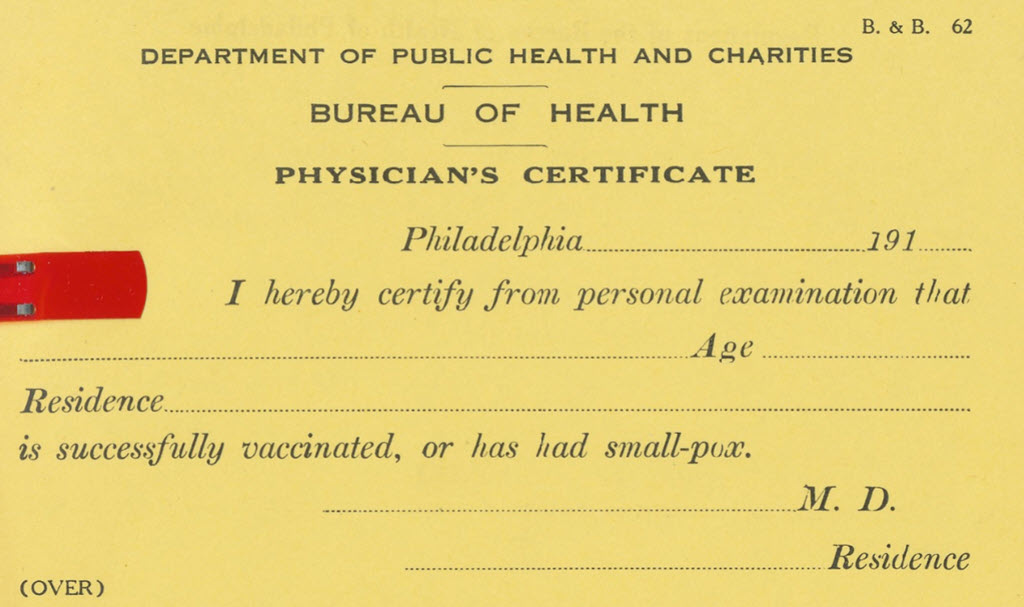Before we get to the issues that are being raised as objections to vaccine passports today, there are some lessons to be learned from history about the intersection between vaccinations and privacy, security, and inequality.
You think this is going to be dry and boring, don’t you? Nope, the last article and the next one are the dull ones. This has stories from history that you’ve never heard and they’re kind of fascinating. Don’t leave too soon.
Before we get to the sad bits, it’s worth repeating what should be obvious: We’ve done this before. It shouldn’t be this hard.
Public schools Public schools in the US have required vaccinations for more than 150 years. Massachusetts passed the first US law mandating vaccination in 1855. The picture above shows a smallpox vaccination certificate required by many US schools as early as 1922. It was also in 1922 that the US Supreme Court dismissed a case about the constitutionality of state vaccine requirements because the issue was trivial – of course states could provide for compulsory vaccination.
Today all 50 states require school vaccinations for diphtheria, tetanus, pertussis (DTaP), polio, measles and rubella, and chickenpox. 49 states require a mumps vaccination. 43 states require hepatitis B vaccination. Some states add a few others to the list. If you don’t prove your children have their vaccinations, they don’t get to go to public school.
It’s not exactly controversial, plus or minus a few excitable people. (There are always excitable people.) We’ve understood for 150 years that mandating school vaccinations as a method of perpetuating herd immunity is far less costly for governments, health care providers, and the economy than treating victims of a disease after it has appeared in a community.
International travel Vaccine certificates have been required for international travel since the 1940s. You may be required to present proof of vaccination at border checks either to leave or to enter some countries. All experts agree that the certificates contributed to preventing the spread of smallpox, especially after the rapid expansion of air travel in the 1960s and 1970s. Today smallpox is gone but you may need vaccinations for yellow fever, polio, or meningococcal meningitis before you get on a plane.
That’s not a surprise. I’m not telling you anything you don’t know. In the next article we’ll talk a bit about how we’ve gotten to the point that it needs to be repeated.
Okay, it’s history time. No need to take notes, the exam is open book.
Yellow fever immunity was used as a weapon of inequality

Yellow fever was a mosquito-borne disease that ravaged the antebellum South during the 1800s. Nearly half of those who got it died. In the six decades between the Louisiana Purchase and the Civil War, New Orleans alone went through 22 epidemics, killing more than 150,000 people.
It became clear over time that the survivors were immune from future infection – they were “acclimated,” in the jargon of the day.
Katherine Olivarius, an assistant history professor at Stanford University, specializes in 19th century America. According to Olivarius, immunity became a form of privilege for white survivors and an important requirement for whites to participate in the economic, social, or political life of New Orleans.
White residents who had not been “acclimated” were unable to get jobs or life insurance. Nor could they live in certain neighborhoods, or even think of marrying; fathers would not let their daughters marry unacclimated men. Since there was no good test, residents were quizzed by employers and landlords about their history with yellow fever, which epidemic they were in, and who had witnessed their illness. Olivarius says:
“Unacclimated” white people were considered unemployable. Life insurers rejected unacclimated applicants outright or else charged a hefty “climate premium.” If you were white, immunity-status impacted where you lived, how much you earned, your ability to get credit, and whom you were able to marry. It’s no wonder, then, that many new immigrants actively sought sickness: huddling together in cramped dwellings, or jumping into a bed where friends had just died — the antebellum forerunners to “chickenpox parties,” except much deadlier.
It was worse in the slave trade. White slave owners routinely repeated the myth that black people were innately immune to yellow fever, and used that to justify why black people should do the hardest labor — draining swamps, working in the fields and fixing the levies where the thickest clouds of mosquitos swarmed.
They knew they were lying. The hypocrisy was exposed at the auction block, where being immune to yellow fever would drive up the price of a slave by 25-50%. An enslaved person’s immunity was literally appropriated as capital by the slave owner.
Immunity to yellow fever was used as a weapon to widen the divide between rich and poor. Olivarius:
High mortality, it turns out, was economically profitable for New Orleans’s most powerful citizens because yellow fever kept wage workers insecure, and so unable to bargain effectively. It’s no surprise, then, that city politicians proved unwilling to spend tax money on sanitation and quarantine efforts, and instead argued that the best solution to yellow fever was, paradoxically, more yellow fever. The burden was on the working classes to get acclimated, not on the rich and powerful to invest in safety net infrastructure.
Wow, that was sad. Any smallpox stories to depress us with?

The first vaccine passports were scars from smallpox vaccinations – and there’s a lesson about security that we need to have in mind today.
The US was in the grip of a full-blown smallpox epidemic at the turn of the 20th century. Highly infectious, often deadly, at least 165,000 cases confirmed in government reports but probably more than 600,000 total.
There was a nationwide push for smallpox vaccination. In cities and states with the worst outbreaks, vaccination was compulsory and official certificates of vaccination were required to go to work, attend public school, ride trains or go to the theater. Public health officials went door-to-door to check proof of vaccination.
But vaccination was fairly brutal and anti-vaccination crusaders were spreading untrue rumors about contracting tetanus or syphilis through the vaccine, so fake certificates were widely circulated. In 1904 the New York Times published an article criticizing “an extensive traffic in worthless certificates of sufficient vaccination by east side physicians” perpetrating a “petty swindle on the poor, ignorant and credulous.” Parents could obtain fake certificates from doctors stating that their children were “medically unfit” for vaccination, or just forge the certificates themselves.
The smallpox scar was so distinctive that it began to be used as the true “passport” to civic life. In 1901, Dr. James Hyde of the Rush Medical College in Chicago wrote an editorial that proposed using the vaccination scar itself as the “seal on the passport of entrance to the public schools, to the voters’ booth, to the box of the juryman, and to every position of duty, privilege, profit or honor in the gift of either the State or the Nation.”
The Covid vaccine does not leave a scar. One of the important goals for a Covid vaccine passport will be to prevent the QR code or paper certificate from being hacked or forged. The groups working on vaccine passports are smart people who know their history. In the next article we’ll talk about digital apps and QR codes and whether an app can be designed that is secure and private and able to be implemented equitably.

